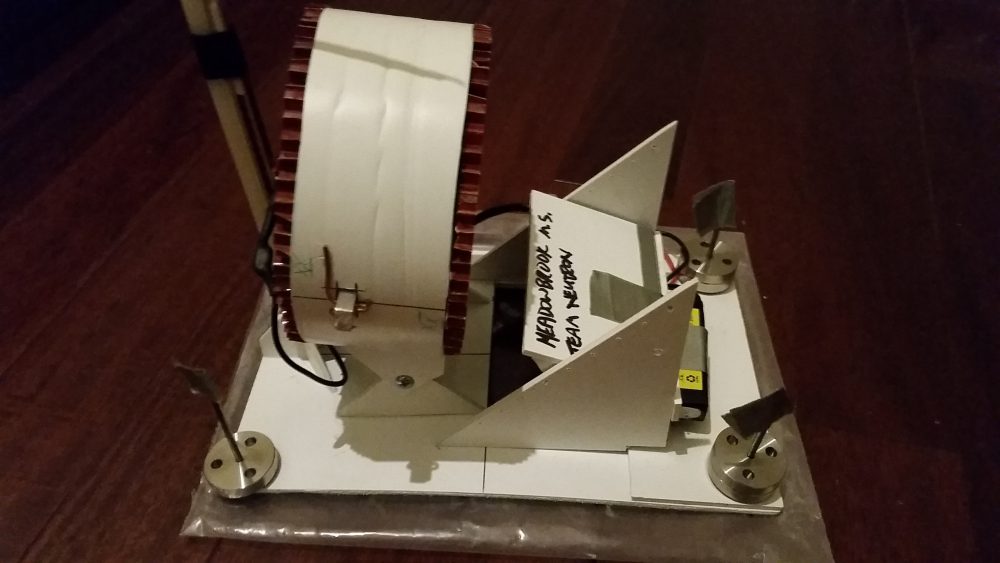It’s a new year and the Science Olympiad is starting to ramp up! I’ve noticed a fair amount of traffic on last year’s Science Olympiad posts. I’m assuming that, like me, there’s a lot of unknowns and questions when one first embarks on building the hovercraft, hence the uptick in traffic.
Last year, the hovercraft competition was introduced as a new division. There was a lot for us to learn. We went through trial and error to end up with the hovercrafts we eventually entered into competition. The same can be said of the materials needed to prepare our competitors for the test portion of the competition. That meant we had to be flexible… with our study materials as well as our hovercrafts.
***Please check for updated rules before starting your builds!***
Here are a few pointers to help guide you in the right direction, and hopefully, to a successful build. You must always keep in mind the parameters of the build… the weight, size limits, etc. All of these constraints should be plainly stated in the build guidelines and on the national Science Olympiad website. Here, I’ll add a word of caution, the hovercraft listed for sell on the Science Olympiad website is only useful for demonstration purposes. The craft is not suitable for competition. This is because it lacks several key elements. It does not have a barrier to protect fingers from touching the prop, it is way too light, and not easily adaptable (I’ll explain this in detail later in this post).
Our parameters for the 2016-2017 Science Olympiad stated that our vehicles had to be between 15 cm to 30 cm in length. Height had to be less than 20 cm. The length could could not change during the run and had a weight limit of 2,000 grams. Propellors had to be shielded and not extend beyond the track’s side rails. Other vehicle limits are stated but not important at this stage in the development of your basic craft.
What should your craft look like? Well, we know the minimum and maximum lengths… as well as the width (determined by the track rails)… so, I would suggest that you try to get as close to those maximum dimensions as possible in terms of overall size. This is because if you make it too narrow and/or not long enough, the craft will tend to get cocked sideways as it travels down the course, creating drag and slowing down your runs. You should also keep in mind the skirt of your craft in relation to your hovercraft’s platform. The skirt usually extends beyond your hovercraft platform. If that’s the case and your platform is to the maximum size restriction, you may be disqualified from competing. To be safe, allow about an inch per side for the skirt. Make your hovercraft’s deflated skirt just under your size restriction. This will help keep your craft in compliance.
Another feature of your hovercraft build, and this is key, is the adaptability of your craft. As I stated earlier, we had to learn via trial and error. What we initially did not know during the first trials, was that we would be given a target time to achieve. So, if you’re trying to obtain a target time and your motor is not capable of being regulated, you must be able to add or subtract weight to your craft to reach the target times. By adding weight, you make the craft go slower down the track. Removing weight allows it to travel faster. Keep in mind, the heavier your craft and the closest to the target time, results in the highest scores.

Here is a craft that was entered in last year’s competition by one of our teams. It contains features I mentioned. Notice the corners of the craft… it is capable of adding on or removing weight depending upon the time target needing to be achieved. The front weights also overhang the edges of the craft for a reason… they act as bearings, allowing the slightly undersized craft to engage the track walls without creating drag.
The design of the craft also allowed for the regulation of airflow downward as well as rearward. This was accomplished in two ways. One, the shunt that directed air downward was adjustable. Note the small holes on the side walls of the shunt. They’re spaced evenly and the shunt can be locked into place with a pushpin on both sides. Two, the housing containing the motor and propeller is also capable of being adjusted, directing air flow to the shunt or over it as needed.
The competition is set up so that the competing hovercrafts must run the length of the track at a given target time. That time is unknown until revealed at the beginning of each set of runs.
As you build your craft, keep in mind your weight restrictions and weigh the craft regularly. Your battery weight is also important. Different brands, sizes, etc., all have differing weights. These should be noted. Once you’ve built your craft, you should do a few test runs on your own track and keep detailed notes on the placement of the weights on each craft and the battery size, weights configuration, etc. as you go. By tracking the weights of your crafts and the times they take to complete a ‘run’ down the track, you can create charts for each to help determine the weight needed to achieve the desired time at competition. It will save you valuable time in trying to calculate the optimal weight to reach the desired times. These charts should be specific to each team vehicle as each vehicle will vary in construction.
Here are a few specs of the pictured craft:
The weights used are 33.3 grams each.
The craft weighed 399 grams using a 450 mAh battery.
It was 408 grams using a 800 mAh blue battery.
And 414 grams using a 800 mAh black battery. (6 grams difference!)
The craft using the 800 mAh blue battery with two disc weights = 480 grams.
Craft with 4 disc weights = 547 grams.
Craft with 6 disc weights = 614 grams.
Craft with 8 disc weights = 680 grams.
As you can see, the craft was capable of adding/subtracting weights as needed. Keeping your craft very light gives you more latitude in playing with the weigh ratios. The setup of the craft, in conjunction with the propellor and battery pairing, had more than enough power to lift the vehicle and rapidly run down the track. In fact, without any weights on the craft, it would flip itself over as soon as it was turned on.
For additional information and questions, I’ve found this site to be useful.
https://scioly.org/forums
